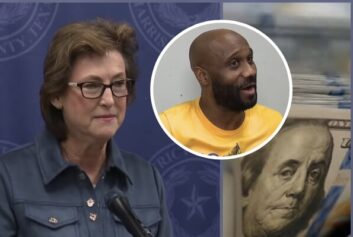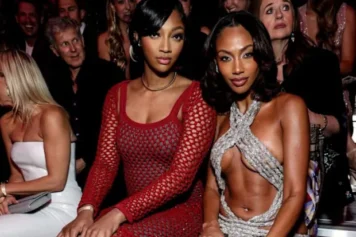If you Google “the most avoided fighter in boxing,” the results aren’t who you might expect. There isn’t any mention of Floyd Mayweather Jr., Manny Pacquiao or Mike Tyson. Most articles are about a 31-year-old from Aiken, S.C., named Paul “The Punisher” Williams.
Boxing fans already know of Williams’ tale. He was one of the most exciting fighters in the business, a 6’2’’ left-handed welterweight (147 pounds) who routinely threw over 1,000 punches in 12-round fights (for comparison’s sake, Pacquiao, who also fights at 147 pounds, is 5’6’’ and threw 751 punches in his last fight and 578 in the fight before). He was rarely involved in a boring fight and didn’t subscribe to the “superstars only fight twice per year” mantra, until he was forced to because nobody dared fight him.
Williams’ biggest problem was his ability. After he beat Antonio Margarito, every big-name fighter ran away. Fights against Kelly Pavlik fell through, and calls for fights with Mayweather and Pacquiao went unanswered. He was forced to move up in weight just to find opponents.
His bouts with Sergio Martinez gained him a degree of fame, but nothing like what he probably earned. Their first fight on Dec. 5, 2009 — a victory for Williams — was named Fight of the Year, and the second (a loss) won Martinez Knockout of the Year from HBO and ESPN.com.
Williams recovered from his loss with two victories — one highly controversial against Erislandy Lara, and the other a whitewash against Nobuhiro Ishida — and signed a contract that would finally earn him a spot on the big stage: a pay-per-view showdown against rising Mexican star Saul “Canelo” Alvarez this past weekend on Sept. 15.
But as has been the tale of the tape for Williams — and too many boxers — that fight didn’t happen either. In fact, that fight will never happen, nor will The Punisher ever enter a ring again.
Williams was robbed of fame and riches by the boxing world, intent upon sticking to its system of hand-picking stars, ducking promising fighters, and, more recently, short-sighted promoters who keep business and money to themselves. In the end, when he finally got the due he deserved, Williams was struck with tragedy.
—
George Peterson is an old-school boxing trainer with a stable of fighters in Baltimore, Md. He manages his fighters, too. Paul Williams is one of his disciples.
Peterson brought Williams up through the ranks; Williams rising with an unbeaten record, an impressive knockout ratio (24 of 32) and mind-blowing punch rate.
Williams wasn’t getting much attention until Peterson got a call from Antonio Margarito’s team. They needed a southpaw because Margarito was getting ready to fight the welterweight champion at the time, Daniel Santos, in Puerto Rico.
Peterson and Williams flew down. Williams put on a clinic.
“We got the best of the sparring session, and they told us they couldn't use us anymore,” Peterson said. “So they paid us and sent us on home.”
Williams made his mark.
“We let them know,” Peterson said. ”Paul Williams was someone that needed to be reckoned with.”
Sadly, it was to Williams’ detriment. And it became apparent he was going to be in a constant fight to escape the boxing underbelly.
“It's inherent of the business, unfortunately,” said Rodney Hunt, Head of Marketing at Goossen Tutor Promotions, who promoted Williams. “They want to cash in as much as they can on their fighters, and when you're looking at Paul Williams, a guy who throws a minimum of 1,000 to 1,200 punches in a fight – and he's got a chin – why would you want to fight a person like that? You know your guy's probably going to lose.”
Williams pressed on. He continued fighting and became the mandatory challenger for the WBO title. The titleholder was Margarito.
Margarito, with their sparring session in mind, wanted no part of Williams. It took months of court proceedings, but the WBO ordered Margarito to fight Williams or lose his belt.
The fight finally happened on June 14, 2007, in Carson, Calif. – Margarito’s backyard – in front of a raucous crowd. It didn’t faze Williams…at all.
“I don’t know if I’ve ever seen a fighter more visibly ecstatic to be in the ring for a big event than Paul Williams, who was grinning openly through all of the pre-fight pageantry,” said Jim Lampley, as the opening bell struck on HBO’s telecast.
It was his time; and he capitalized, issuing blow after blow to Margarito for seven punishing rounds. Margarito stormed back for the next four rounds, but Williams took the twelfth round and won a unanimous decision.
Now a titleholder, Peterson thought fights would finally come his way.
But that’s not how boxing works.
—
Welterweight never seemed to agree with Williams. Really, welterweight fighters never agreed with Williams.
Peterson rattled off names of fighters that turned Williams down: “Shane Mosley, Floyd Mayweather, Zab Judah, Miguel Cotto, Joshua Clottey – everybody that was in the top 10 [at welterweight] turned us down. We tried everybody that we could, and we couldn't get anybody.”
In September of 2008, Williams was forced to move up to middleweight to find a fight after two bouts with Carlos Quintana. Williams fought twice at 160 pounds to get accommodated to the weight and won both easily. His next fight was against Winky Wright (a surefire Hall of Famer) on HBO.
Williams destroyed the defensive genius, winning every round.
“Winky Wright was a huge, defining fight for Paul Williams,” said Hunt, hitting back at claims that Wright was a shot fighter heading into the fight. “He demolished him.”
Much like Marvin Hagler in the ‘80s, the more Williams won, the more nobody wanted to fight him.
After two postponed fights with Kelly Pavlik — the Youngstown, Ohio native who had three middleweight belts before losing them to Bernard Hopkins and struggled with alcohol problems and a nasty staph infection — Williams took a fight against Sergio Martinez on short notice on Dec. 5, 2010.
Martinez was a relatively unknown southpaw, very similar to Williams in the sense that neither could land a big fight. Commentators predicted a slow fight in Atlantic City. They were wrong.
Williams and Martinez both went down in the first round and didn’t stop throwing punches until the final bell rang. Williams won a split decision. It was named Fight of the Year.
Still, Williams couldn’t find a big-name opponent. Challenges to Mayweather and Pacquiao were ignored. So was a rematch against Margarito. Why would they get in the ring with this guy?
After beating Kermit Cintron in a bizarre fight, Williams took a rematch against Martinez. Martinez knocked him out in the second round and won Knockout of the Year. It was a pivotal moment in Williams’ career.
“After Mayweather had announced that retirement, I remember saying Kelly Pavlik was on the verge of becoming the single most prominent and most important American fighter,” Lampley recalled. “Well, obviously, if Pavlik got to that level and Paul Williams beat him, Paul was gonna be the most significant American fighter.”
Instead, Williams was in the same situation he found himself in all too often: waiting.
He beat Erislandy Lara in the eyes of three Atlantic City judges – and the eyes of three Atlantic City judges only – then beat Nobuhiro Ishida legitimately and soundly.
It became more like work for Williams and Peterson. Why put themselves through the rigors of training and the aggravation of trying to find an opponent just to miss out on another big fight?
“We were thinking about retirement then,” Peterson said. “I wanted Paul to go out with a win. After all, Paul had 47 [he had 43 as a professional] fights. And not only that, Paul beat everybody he fought. So now he beats Ishida, he goes out with a win, that's it. Case closed.”
But then a call came from Oscar De La Hoya. It was a pay-per-view offer to fight Canelo. It was the offer they had been waiting for Williams’ entire career.
“Oh man, I mean, this was it, this would have been the biggest fight of his career,” Peterson said.
It wasn’t to be.
—
Williams loves a few things outside of the ring. His family, first and foremost. But he also loves hunting, fishing, muscle cars and motorcycles.
While preparing for his date with Canelo, Williams’ brother was getting married. Peterson and Williams worked out a schedule to begin training in Baltimore, briefly stop camp and resume after the weekend.
Williams travelled down to Marietta, Georgia, two weeks into training camp. On Sunday, May 27, Williams was traveling east on South Marietta Parkway. He was going too fast for conditions on his motorcycle, tried to come around a curve and lost control.
Williams suffered severe injuries and was taken immediately to the hospital after severing his spinal cord.
He was told he would likely never walk again. Never enter a ring again under his own power. Never throw a punch. Never go hunting. Never ride is motorcycle. All before the biggest moment in his career, which was already long overdue.
As Williams is known to do, he kept a positive attitude. Williams insisted he would walk again from the first time he got word to the media through Peterson. “From the waist down, he has absolutely no movement. He’s in very good spirits, though,” Peterson told The Associated Press. “He still believes he’s going to fight again.” Williams is currently utilizing a wheelchair.
The fight was called off, and Canelo annihilated Williams’ replacement, Josesito Lopez, with a fifth-round knockout. It was a major downgrade from what could have been. “From a style stand-point it was a wonderful matchup,” Lampley said. “I couldn’t wait to see it. And [Williams] would have had a chance to win that fight.”
Sadly, it was the tale of Williams’ career. He was a victim of the boxing world, though not really a victim at all. He earned good money, loved his job, loved his family, and displayed his affection, heart and chin whenever possible.
“I don't know that there was anything else he did that got to his heart as much as what he did in the ring. He loved it,” said a reflective Lampley. “[Williams] was fun, he was a gift to boxing and to boxing fans, and I’ll miss him.”
He’s also been smart with his investments, Peterson and Hunt both assuring TSL that Williams’ financial future was set. It’s possible he has a career in broadcasting, given his personable disposition and obvious knowledge of the sport. Hunt also spoke about how positive Williams has been throughout his traumatic experience, and how Williams talks about becoming a stand-up comic.
But the fact is the boxing world lost Paul Williams too soon. Or rather, the boxing world didn’t make enough of Paul Williams when it had the chance.
There is absolutely no reason Williams should not have headlined pay-per-view fights during his career. He had some technical flaws – which were exposed – but he won a lot of exciting fights with heart and determination. And, that’s what the fans want. That’s what makes money. That’s what makes careers and legends. It should be that simple.
Instead, Williams will only be remembered fondly by the dwindling number of fight fans fortunate enough to have seen Williams throw the fair ones.
And like far too many boxers in this corrupt, incestuous sport, which can’t get out of its own way fast enough, Williams will be remembered by too few.



